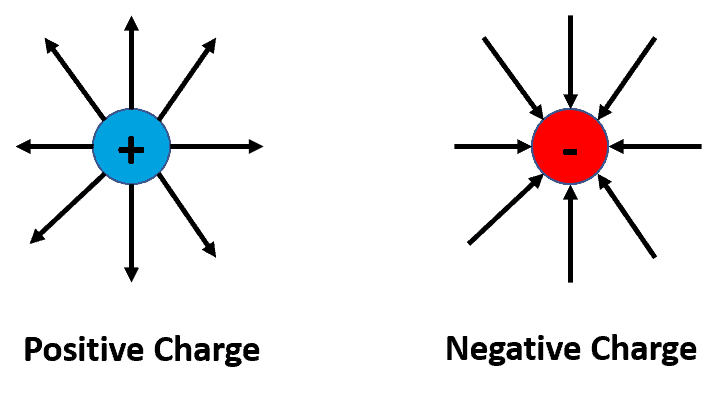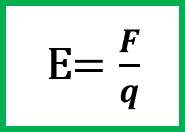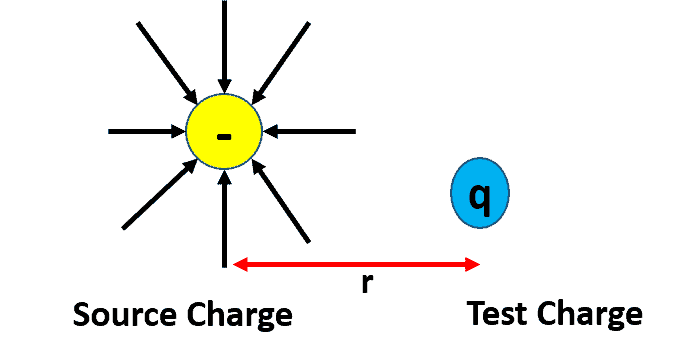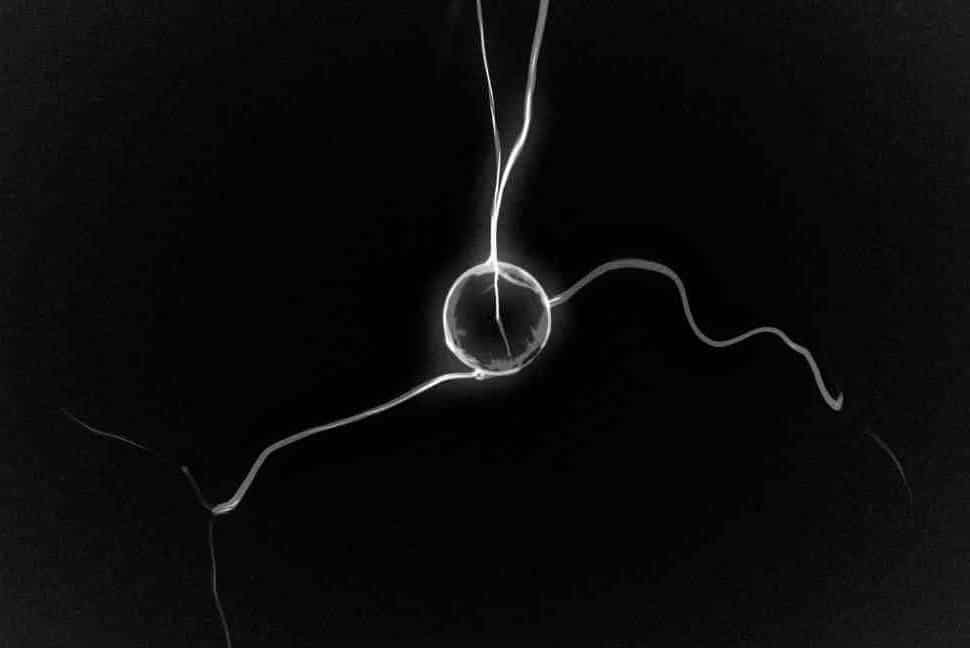In the meter-kilogram-second and SI systems, electric field units are newtons per coulomb, which are equivalent to volts per meter. The electric field in the centimeter-gram-second system is measured in dynes per electrostatic unit (esu), which is equivalent to statvolts per centimeter.

Table of Contents
SI Unit of Electric Field
The SI unit of the electric field is volts per meter (V/m). This unit is the same as Newton’s per coulomb. These are derived units, with Newton denoting force and Coulomb expressing charge.
The Electric Field of a Unit Charge
An electric field (E.F) is a field of space around an electrically charged particle where another test charge experiences a force of attraction or repulsion. Additionally, an E.F can also be defined as an electric property that is associated with a certain point in space when some form of charge is present.
It is represented by the symbol “E”.

Electric Field Strength
The electric field strength at a point is defined as the electric or Coulomb force F exerted per unit positive electric charge q at that point, or simply E = F/q. It is a vector quantity, meaning it has magnitude and direction. It is represented by the equation;

Where F = force acting in newtons and q = charge in coulombs.
Electric Field of a Point Charge
Consider that we have a source charge that is placed in the vacuum. Another test charge (q) is placed at a distance r to that source charge.

The force acting on the test charge is given by

The E.F induced around the source charge is given by the following relation.

The E.F from any number of point charges can be obtained from a vector sum of the individual fields. A positive number is taken to be an outward field; the field of a negative charge is toward it.
Electric Current
The rate of passage of negative charges in a conductor is referred to as electric current (current electric).
To put it another way, an electric current is the flow of electrons in an electric circuit on a continuous basis. The conducting material is made up of a large number of free electrons that move from one atom to the next at random.
Electromagnetic Force
When a conductor is put in a magnetic field and current runs through it, the magnetic field and current interact to create a force. This force is known as the ” Electromagnetic force .” The direction of the current, magnetic force, and flux is determined by Fleming’s left-hand rule.
The properties of electromagnetic force are as follows:
- It obeys the inverse square law.
- It may be attractive or repulsive in nature.
- It is a long-range force.
- The photon is the field particle of the electromagnetic force.
An electromagnet is a magnet that generates a magnetic field by using an electric current. When the current is turned off, the magnetic field disappears. In electromagnets, the magnetic field is generated by a high number of tightly spaced turns of wire or coil.
Electromagnetic Force Formula
The Lorentz force refers to the total electromagnetic force F acting on a charged particle and is given by
| = | force | |
| = | electric charge | |
| = | external electric field | |
| = | velocity | |
| = | magnetic field |
Summary
- Electric field units are volts per meter (V/m) and Newtons per coulomb.
- The electric force is the net force on a small, imaginary, and positive test charge.
- E.F arrows point out of positive charge and into negative charge.
- The E.F. is radially outward from the point charge in all directions.
- E.F is usually caused by varying magnetic fields or electric charges.
- Electric field lines are always perpendicular to the source and the terminal. They come out perpendicularly from the positive surfaces and enter perpendicularly to the surfaces that are negative.
Important Links
Magnetic field | Definition & Facts | Britannica
Electric Current Definition and Explanation
Current Electricity| Alternating Current & Direct Current
Current Density| Definition, and Formula
Frequently Asked Questions
1. What is Biot Savart Law?
The Biot Savart Law is a mathematical formula that defines how a continuous electric current produces a magnetic field. It relates the magnitude, direction, length, and closeness of the electric current to the magnetic field. Biot–Savart’s law is compatible with both Ampere’s circuital law and Gauss’s theorem.
2. What is the Potential Difference?
The potential difference between two places in a circuit is the difference in the amount of energy that charge carriers have. The quantity of current multiplied by the resistance equals the potential difference (also known as voltage). It is a measure of the energy given to the charge carriers in a circuit.
3. What is Direct Current?
Direct current is the unidirectional flow of electricity (DC). It is produced by batteries, thermocouples, solar cells, and dynamo-type commutator-type electric machines. In electrical engineering, the word DC refers to power systems that have just one polarity of voltage or current and a constant, zero-frequency, or slowly changing local mean value of voltage or current.
4. What’s Alternating Current?
The flow of electrons in an alternating current (AC) changes direction at regular intervals or cycles. Power lines carry alternating current, and traditional home electricity comes from a wall outlet.
5. What is surface charge density?
Surface charge density (σ) is the amount of charge per unit area, measured in coulombs per square meter (C⋅m−2), at any point in a two-dimensional surface charge distribution.
6. What is ampere’s law?
According to Ampere’s law, the integral of magnetic field density (B) along an imaginary line is equal to the product of free space permeability and current enclosed by the path.
More Links
- BCl3 Lewis Structure in four simple steps - November 1, 2023
- PH3 Lewis Structure in four simple steps - October 8, 2023
- PF3 Lewis structure in four simple steps - September 24, 2023



